What were the alternatives to humanity
Man is rational, and this is our main distinguishing feature, but a big question arises: is man really the only rational being on the planet? We will not take into account dolphins, dogs and other animals far from us. In fact, in the history of primates, rationality arose far more than once. And a lot of different creatures embarked on this path, evolved, but for one reason or another, they went the distance. About all this in the next issue of our friends - the channel Sci-One TV - says anthropologist Stanislav Drobyshevsky. Watch the video and read the text version under the cut.
Pliopitecs were among the first to try to become reasonable.
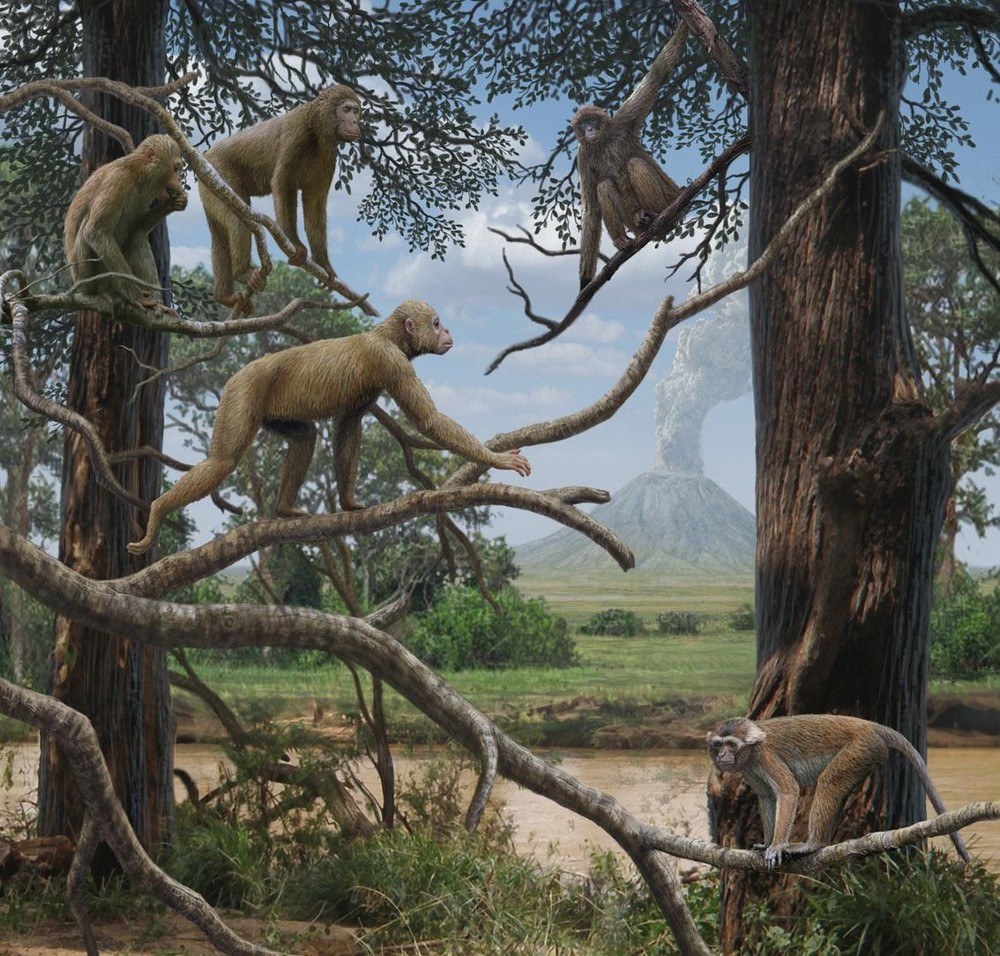
')
They appeared about 40 million years ago, evolved in their own way, and about 15 million years ago showed quite good opportunities for themselves. They lived in Europe. At the same time, when human apes lived in Africa, they set out on the path of humanization. Both those and others still galloped along the branches.
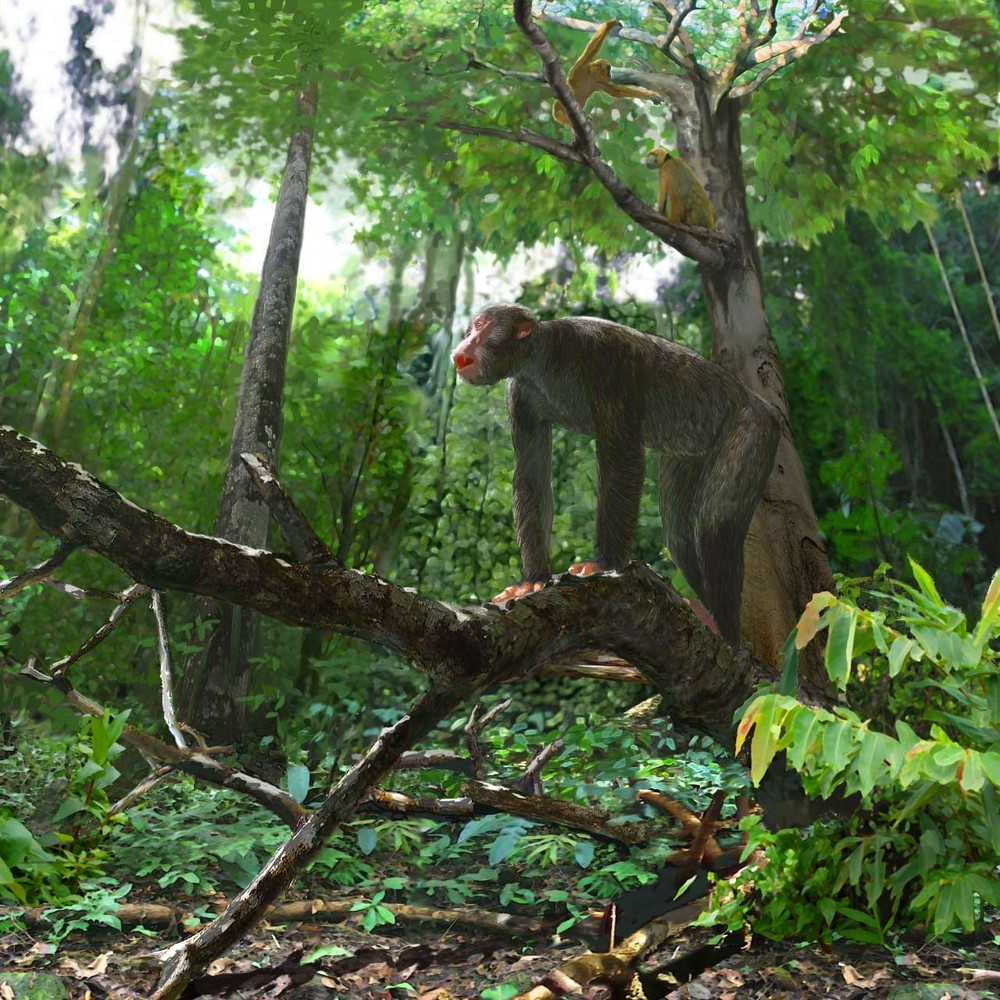
Pliopithecus had about the same capacity for arborealism, a rather large brain, short jaws with relatively small canines - that is, all the initial data in order to become reasonable.
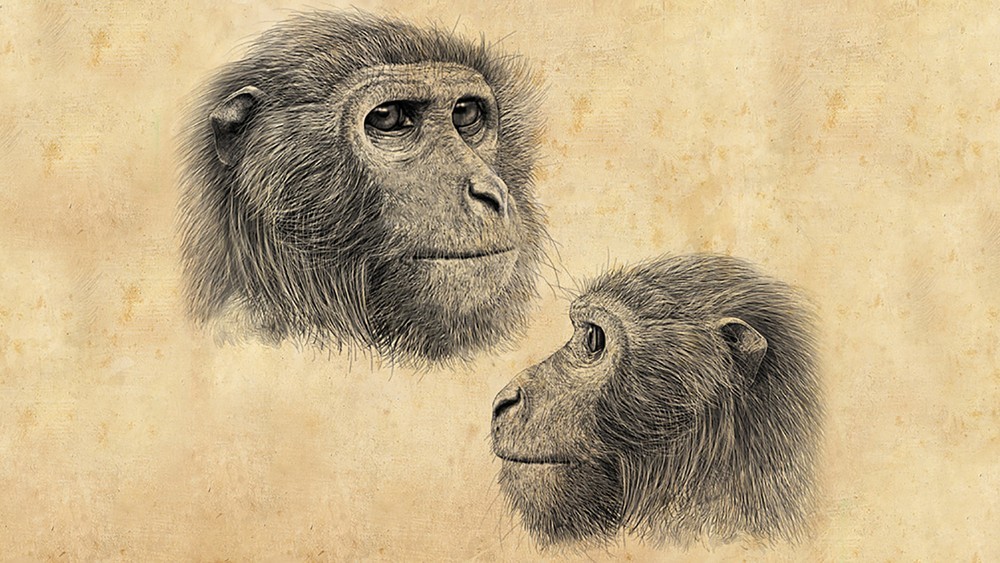
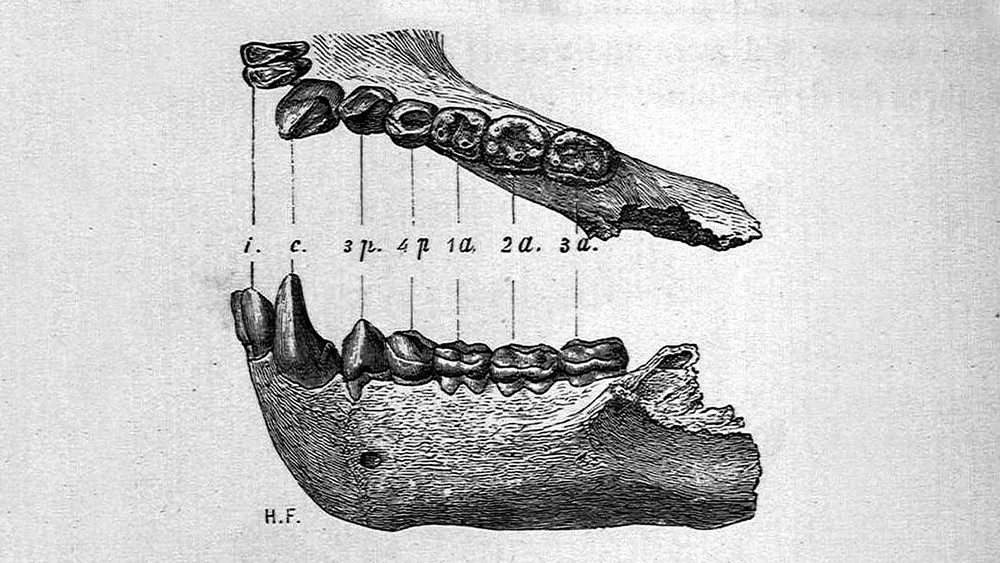
But about 10 million years ago they disappeared from the face of the planet. The Pliopithecus ruined the same climate change that many other species of living creatures in Europe and Asia destroyed, at the same time pushing our ancestors to further development.
At this time, that is, about 15 to 10 million years ago, the climate on the planet was deteriorating. It became colder and drier, and the spaces previously occupied by large tropical forests turned into savannahs .
But if in Africa our ancestors emerged from these endangered forests into savannas, became bipedal, and several million years later they became reasonable, then in Europe these changes took place too quickly, and Pliopitecs simply did not have time to adapt. After all, Europe is not an equator, it got cold fast there. Pliopitecs did not have a chance to become someone else and died out safely. And in the vast steppes, herds of hipparions , ancestors of bison, and so forth galloped around. And only after a few more millions of ancient people finally came from Africa and settled these spaces.
At the same time on the island of Gargano , which was located in the middle of the Mediterranean Sea, but with the amendment that the Mediterranean Sea stretched from the Pillars of Hercules to present-day Kazakhstan, there lived a wonderful monkey - oreopitek . The Oreopithecus existed in unique conditions, since there were practically no large predators on the island of Gargano. True, there were crocodiles and bears, but these are not the most dangerous creatures for primates. And in such a heavenly conditions, the Oreopithecus descended to the ground and became almost bipedal - at least the structure of the pelvis and thigh bones speaks of this quite definitely.

They have developed quite clever hands. The jaws were very short, with small fangs, which is a sign of reduced aggression. These were important steps in order to evolve to a reasonable form, but the decisive step was not taken - orio-piths did not begin to make tools.
Maybe later it would have come to this, but about 7 million years ago the same climate change led to a decrease in the level of the Mediterranean Sea, the island of Gargano connected with the mainland of Europe and turned into a peninsula. There was a modern Italy. The habitat of the oriopithecus was inhabited by feline predators, and this ended the Oreopithecus. Apparently, they just did not have time to understand that such animals need to be afraid.
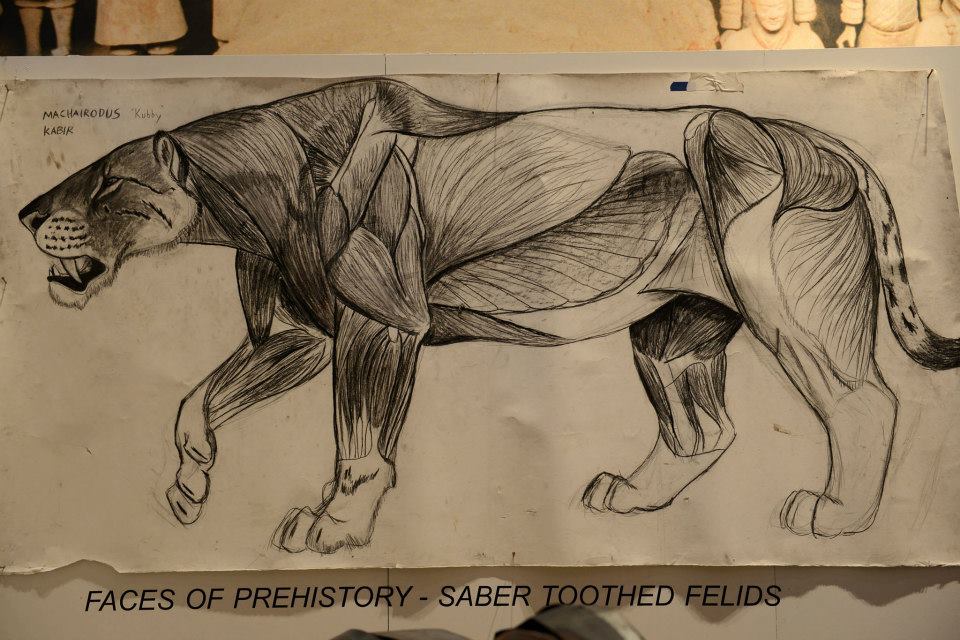
At that time, another story happened in the Far East with Sivapitekas and many other great apes of Asia, which could also become reasonable. But in Southeast Asia, climate change was occurring very slowly, tropical rain forests were preserved there for too long. And by the time the Asian apes swayed and became ready to go out into the savannahs and become two-legged, ready-made people on two legs with lances and fire already came from Africa, and drove these unfortunate monkeys back to the forests, where they remain until now, for example, in the form of an orangutan.

That is, in the history of the animal world, it is important not to overtake your time too much and not to slow down too much. It is necessary to get at the right time in the right place.
With the advent of African bipedal creatures, the variety of ways of primate evolution evolved. And among the early Australopithecus , and among the Gracile Australopithecus there was a great abundance of forms, most of which turned out to be dead ends. For example, among the so-called Gracile Australopithecus were Afar Australopithecus - these are our ancestors, and were, for example, Kenyanthropes , who were the first among all primates - 3.3 million years ago - began to use and manufacture stone tools.

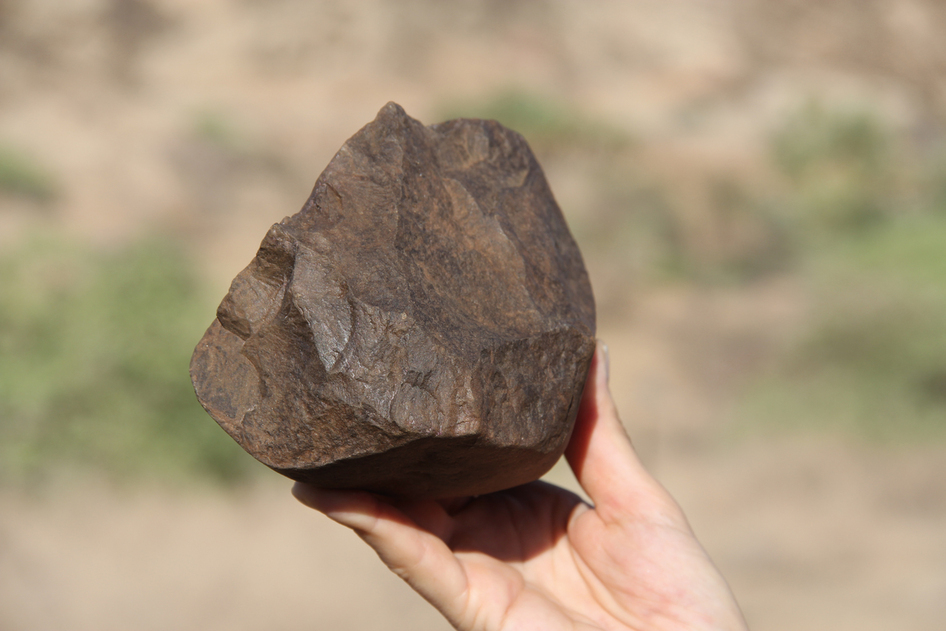
We do not know what they did with these tools. Maybe it was stabbed with nuts, shells or something else. These tools were found at the Lomekwi site in 2015.
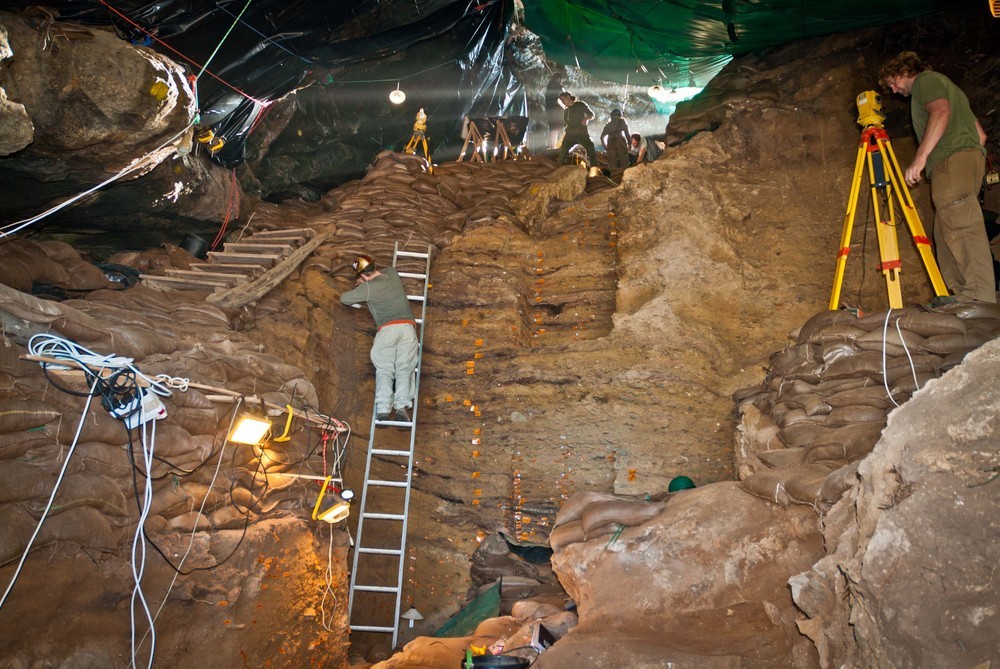
They are not successive with the tools that our ancestors made. Our ancestors were about a million years behind, but the Kenyanthropes did not follow the path of progress. The size of their jaws has increased, apparently for some reason it was needed.
When from about 2.5 million years ago, gracile Australopithecus finally arose our ancestors, the first homo, at the same time another branch turned into parantropes , or massive Australopithecus. Apparently, this happened more than once, because there were East African and South African parantropes. They took the path of vegetarianism: they grew huge jaws, healthier teeth, began to eat sedge, roots, nuts. They had very small canines, very small front incisors.
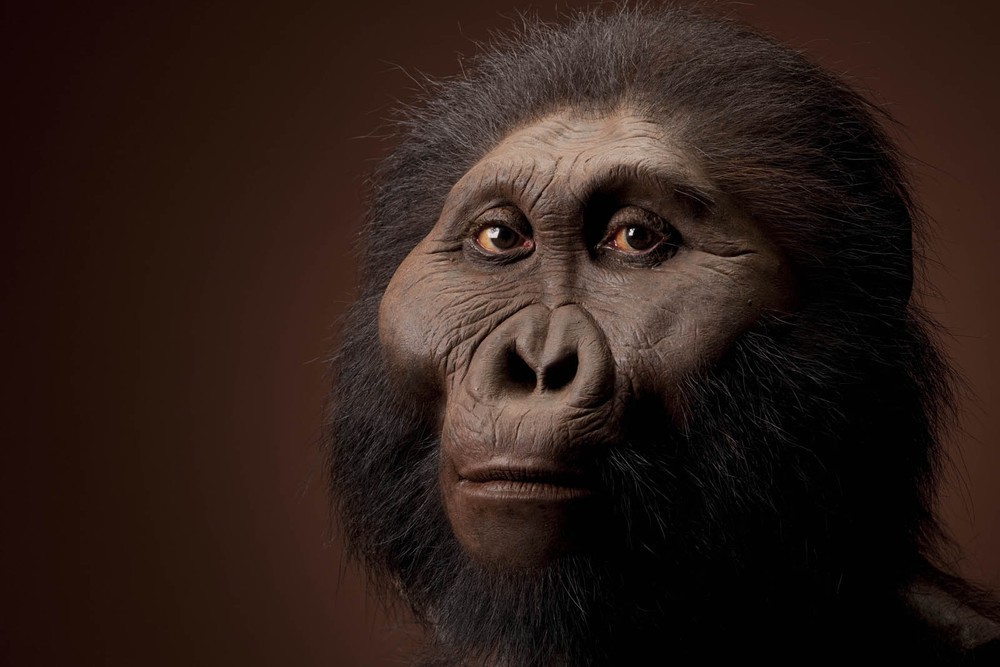
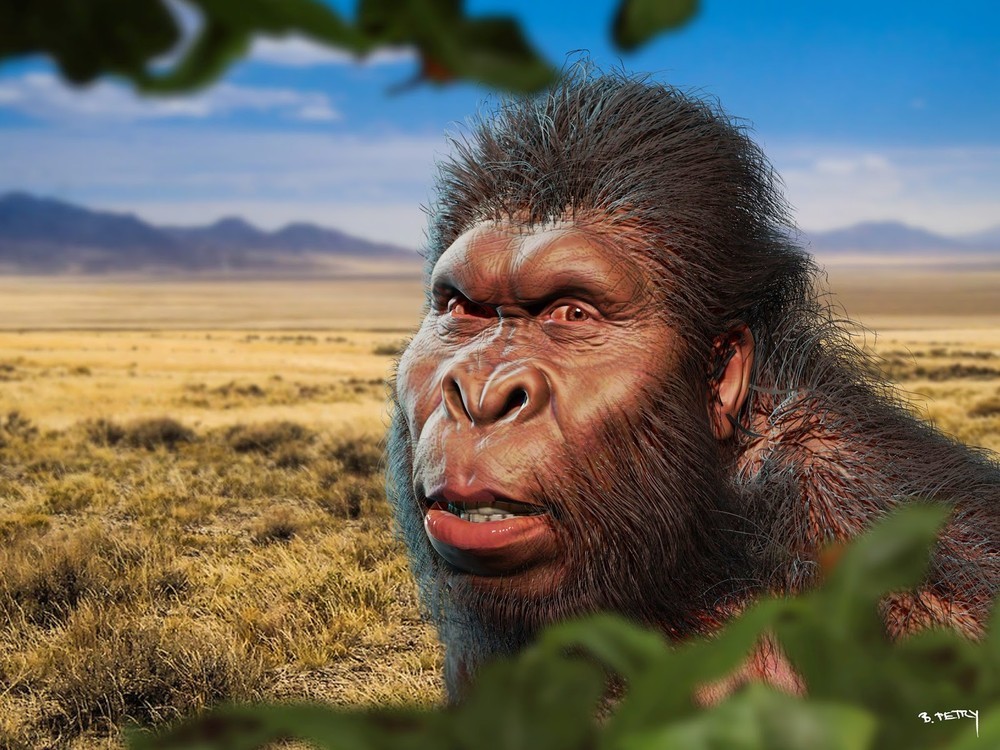
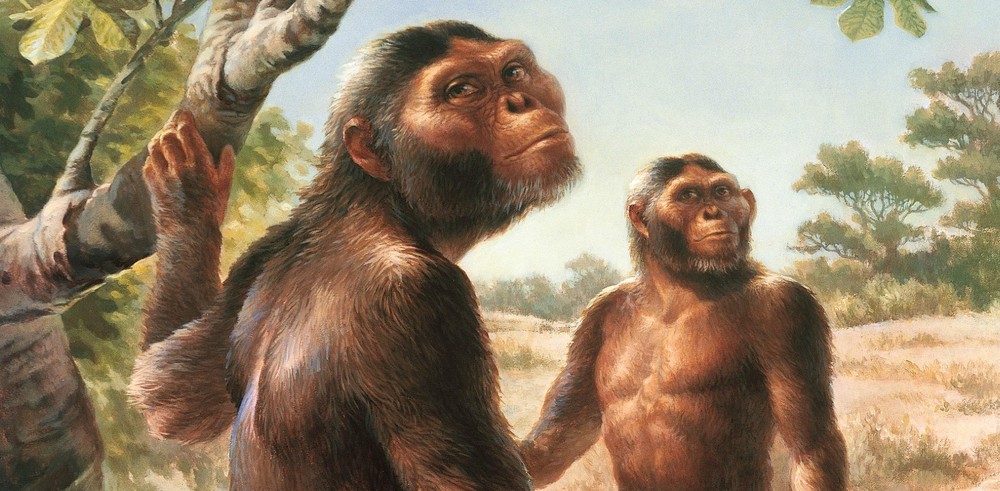
Parantropy could be such a good vegetarian humanity. Most likely, they were fairly calm, despite their large size. But the plant diet brought them to a dead end: to eat the plants, you need to have a very powerful chewing apparatus, which takes a large share of the skull and does not allow the brain to develop.
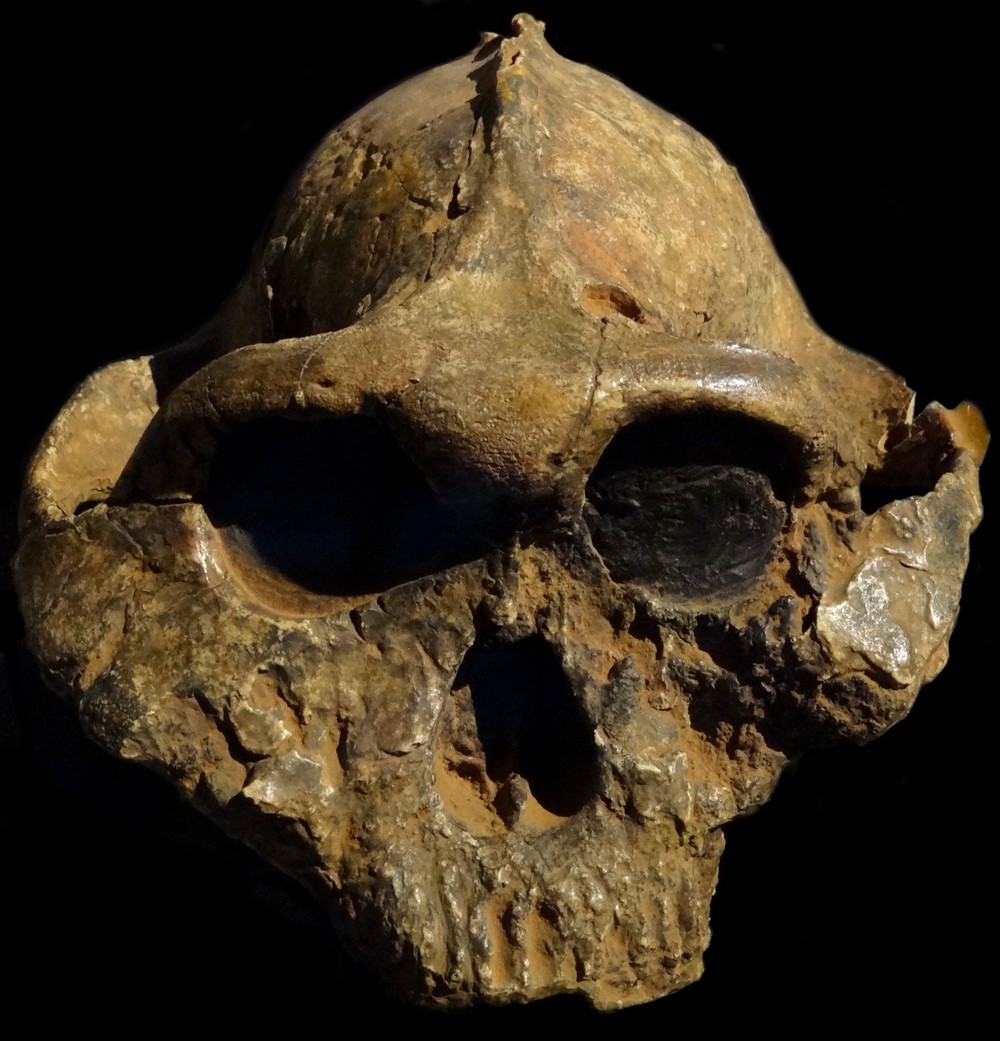
At first, the parantropes overtook our ancestors in the size of the brain and in the perfection of the structure of the hand. But approximately 1 million 600 thousand years ago, parantropes disappeared, and our ancestors became straight-erect people.
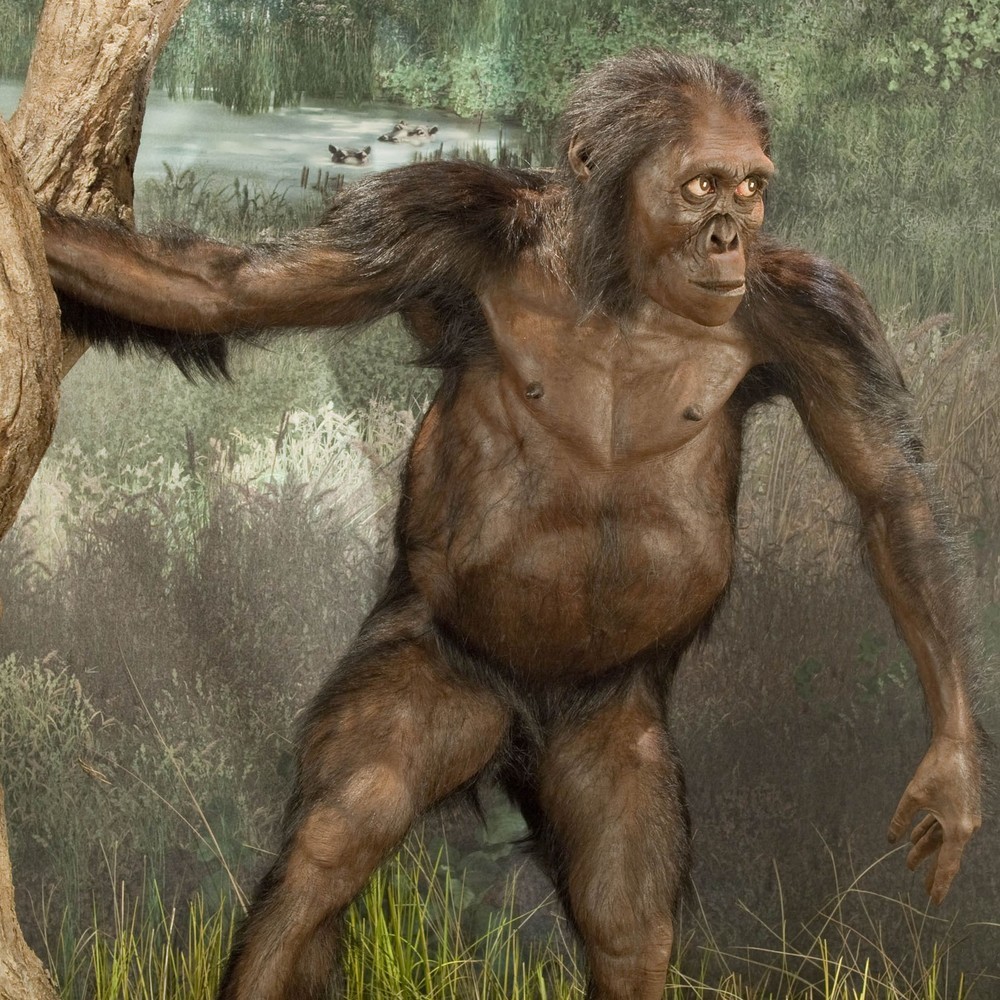
On this, the adventures of our ancestors did not end. To the extent of the resettlement from Africa, starting from about 1.5 million years ago, more and more new forms of humanity arose, which repeatedly came to a kind of dead ends. For example, on the island of Java, people were about 1.5 million years ago. These are classic Pithecanthropes .
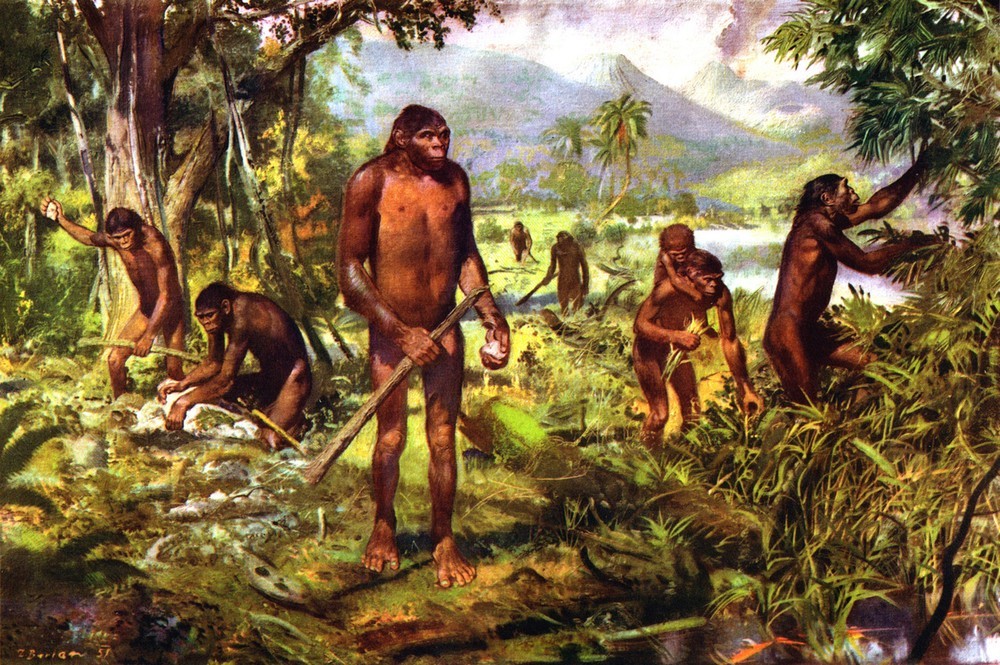

For a million years they had been boiling there in their own juice, and had degenerated into some very strange creatures such as people from Ngandong on the Solo River. Nevertheless, they were also people, and died out about 100 thousand years ago - it is not known for sure.
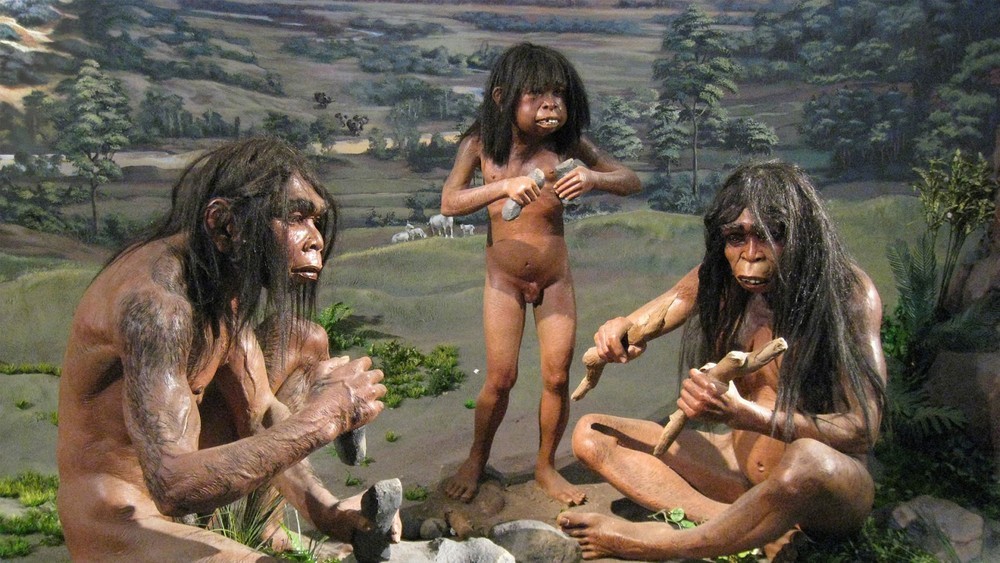
On the island of Flores, a dwarf species of homo floresiensis emerged: its brain decreased from 1 kilogram to 400 grams, growth - to one meter, degradation was in all possible parameters. And about 50 thousand years ago, these creatures also disappeared from the face of the earth.
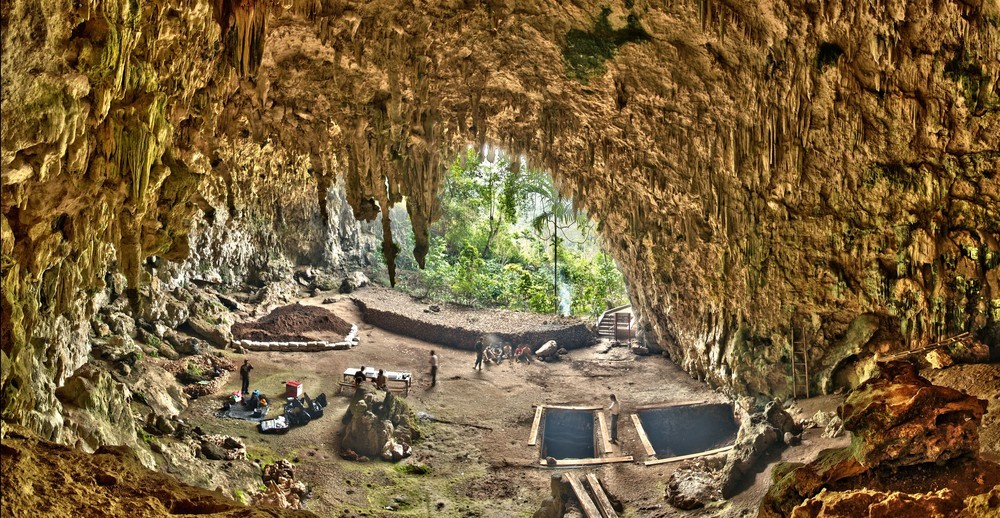

These parallel humanity, apparently, was a lot. All sorts of pygmy hominids were found in Normandy, in India, in the Philippines in the cave of Callao (Callalo). " Denisovskie people " lived in South, Southeast Asia and Siberia. Neanderthals appeared in Europe, and maybe even in the homeland of homo sapiens, in Africa, some alternative humanity also existed for quite a long time. At least, this is evidenced by the analysis of the genomes of modern Africans, with whom these alternative humanity could easily mix with themselves.


Although many of these branches of development turned out to be dead ends, some of them made some contribution to modern people. For example, all modern non-Africans have about 2% Neanderthal impurities. Australian aborigines - Melanesians have up to 5% of Denisov's admixture. But this is still an admixture, and our pedigree is basically reduced to Africa. In the interval from 200 to 50 thousand years ago, it was African humanity that became us. Approximately 50 thousand years ago, another resettlement began outside Africa, marking the onset of the modern era. All alternative versions of humanity disappear with time, and only one species remains on the planet. Probably, it became a little bit more boring. But, on the other hand, the planet is large, we may, in the near future, begin to surf the Universe, and a new species will arise on Earth, which will become reasonable millions of years later. And then everything will turn in a new way.
Pliopitecs were among the first to try to become reasonable.

')
They appeared about 40 million years ago, evolved in their own way, and about 15 million years ago showed quite good opportunities for themselves. They lived in Europe. At the same time, when human apes lived in Africa, they set out on the path of humanization. Both those and others still galloped along the branches.

Pliopithecus had about the same capacity for arborealism, a rather large brain, short jaws with relatively small canines - that is, all the initial data in order to become reasonable.


But about 10 million years ago they disappeared from the face of the planet. The Pliopithecus ruined the same climate change that many other species of living creatures in Europe and Asia destroyed, at the same time pushing our ancestors to further development.
At this time, that is, about 15 to 10 million years ago, the climate on the planet was deteriorating. It became colder and drier, and the spaces previously occupied by large tropical forests turned into savannahs .
But if in Africa our ancestors emerged from these endangered forests into savannas, became bipedal, and several million years later they became reasonable, then in Europe these changes took place too quickly, and Pliopitecs simply did not have time to adapt. After all, Europe is not an equator, it got cold fast there. Pliopitecs did not have a chance to become someone else and died out safely. And in the vast steppes, herds of hipparions , ancestors of bison, and so forth galloped around. And only after a few more millions of ancient people finally came from Africa and settled these spaces.
At the same time on the island of Gargano , which was located in the middle of the Mediterranean Sea, but with the amendment that the Mediterranean Sea stretched from the Pillars of Hercules to present-day Kazakhstan, there lived a wonderful monkey - oreopitek . The Oreopithecus existed in unique conditions, since there were practically no large predators on the island of Gargano. True, there were crocodiles and bears, but these are not the most dangerous creatures for primates. And in such a heavenly conditions, the Oreopithecus descended to the ground and became almost bipedal - at least the structure of the pelvis and thigh bones speaks of this quite definitely.

They have developed quite clever hands. The jaws were very short, with small fangs, which is a sign of reduced aggression. These were important steps in order to evolve to a reasonable form, but the decisive step was not taken - orio-piths did not begin to make tools.
Maybe later it would have come to this, but about 7 million years ago the same climate change led to a decrease in the level of the Mediterranean Sea, the island of Gargano connected with the mainland of Europe and turned into a peninsula. There was a modern Italy. The habitat of the oriopithecus was inhabited by feline predators, and this ended the Oreopithecus. Apparently, they just did not have time to understand that such animals need to be afraid.

At that time, another story happened in the Far East with Sivapitekas and many other great apes of Asia, which could also become reasonable. But in Southeast Asia, climate change was occurring very slowly, tropical rain forests were preserved there for too long. And by the time the Asian apes swayed and became ready to go out into the savannahs and become two-legged, ready-made people on two legs with lances and fire already came from Africa, and drove these unfortunate monkeys back to the forests, where they remain until now, for example, in the form of an orangutan.

That is, in the history of the animal world, it is important not to overtake your time too much and not to slow down too much. It is necessary to get at the right time in the right place.
With the advent of African bipedal creatures, the variety of ways of primate evolution evolved. And among the early Australopithecus , and among the Gracile Australopithecus there was a great abundance of forms, most of which turned out to be dead ends. For example, among the so-called Gracile Australopithecus were Afar Australopithecus - these are our ancestors, and were, for example, Kenyanthropes , who were the first among all primates - 3.3 million years ago - began to use and manufacture stone tools.

We do not know what they did with these tools. Maybe it was stabbed with nuts, shells or something else. These tools were found at the Lomekwi site in 2015.

They are not successive with the tools that our ancestors made. Our ancestors were about a million years behind, but the Kenyanthropes did not follow the path of progress. The size of their jaws has increased, apparently for some reason it was needed.
When from about 2.5 million years ago, gracile Australopithecus finally arose our ancestors, the first homo, at the same time another branch turned into parantropes , or massive Australopithecus. Apparently, this happened more than once, because there were East African and South African parantropes. They took the path of vegetarianism: they grew huge jaws, healthier teeth, began to eat sedge, roots, nuts. They had very small canines, very small front incisors.



Parantropy could be such a good vegetarian humanity. Most likely, they were fairly calm, despite their large size. But the plant diet brought them to a dead end: to eat the plants, you need to have a very powerful chewing apparatus, which takes a large share of the skull and does not allow the brain to develop.
At first, the parantropes overtook our ancestors in the size of the brain and in the perfection of the structure of the hand. But approximately 1 million 600 thousand years ago, parantropes disappeared, and our ancestors became straight-erect people.

On this, the adventures of our ancestors did not end. To the extent of the resettlement from Africa, starting from about 1.5 million years ago, more and more new forms of humanity arose, which repeatedly came to a kind of dead ends. For example, on the island of Java, people were about 1.5 million years ago. These are classic Pithecanthropes .


For a million years they had been boiling there in their own juice, and had degenerated into some very strange creatures such as people from Ngandong on the Solo River. Nevertheless, they were also people, and died out about 100 thousand years ago - it is not known for sure.

On the island of Flores, a dwarf species of homo floresiensis emerged: its brain decreased from 1 kilogram to 400 grams, growth - to one meter, degradation was in all possible parameters. And about 50 thousand years ago, these creatures also disappeared from the face of the earth.


These parallel humanity, apparently, was a lot. All sorts of pygmy hominids were found in Normandy, in India, in the Philippines in the cave of Callao (Callalo). " Denisovskie people " lived in South, Southeast Asia and Siberia. Neanderthals appeared in Europe, and maybe even in the homeland of homo sapiens, in Africa, some alternative humanity also existed for quite a long time. At least, this is evidenced by the analysis of the genomes of modern Africans, with whom these alternative humanity could easily mix with themselves.


Although many of these branches of development turned out to be dead ends, some of them made some contribution to modern people. For example, all modern non-Africans have about 2% Neanderthal impurities. Australian aborigines - Melanesians have up to 5% of Denisov's admixture. But this is still an admixture, and our pedigree is basically reduced to Africa. In the interval from 200 to 50 thousand years ago, it was African humanity that became us. Approximately 50 thousand years ago, another resettlement began outside Africa, marking the onset of the modern era. All alternative versions of humanity disappear with time, and only one species remains on the planet. Probably, it became a little bit more boring. But, on the other hand, the planet is large, we may, in the near future, begin to surf the Universe, and a new species will arise on Earth, which will become reasonable millions of years later. And then everything will turn in a new way.
Source: https://habr.com/ru/post/394939/
All Articles